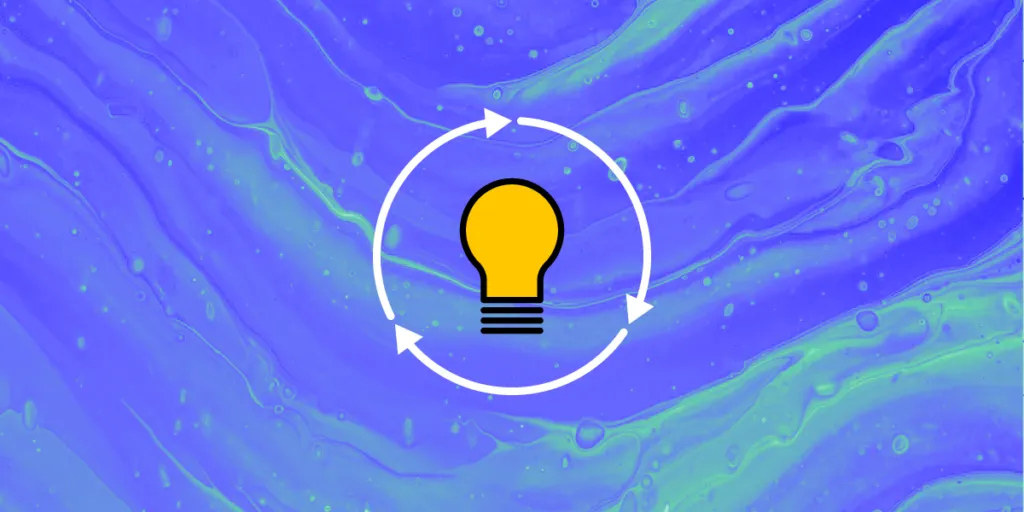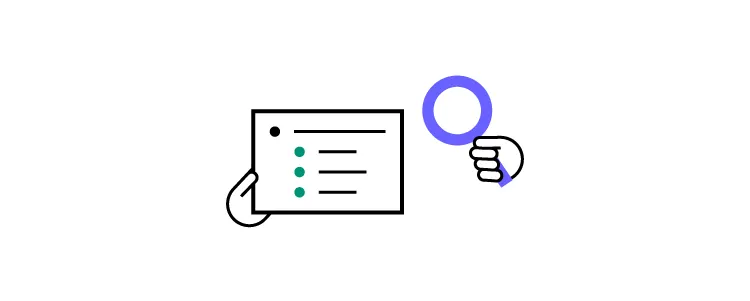Lean UX: Expert Tips to Maximize Efficiency in UX

Everything is about lean these days. The lean startup, lean manufacturing, lean software development, lean UX, and the list goes on! The goal with all of these lean processes is to trim the fat. Remove the systems and processes that slow or disrupt productivity.
Key takeaways:
- Lean UX is a collaborative approach to UX design that incorporates principles from Lean and Agile methodologies.
- It is an off-shoot of a book in early 2000s about Lean software development.
- It has 15 principles such as prioritizing learning, placing importance on outcomes, continuous discovery, and more.
Choosing the right design tool can help streamline UX workflows and processes. UXPin is a collaborative design tool built to increase speed, consistency, and efficiency. Sign up for a 14-day free trial.
What is Lean UX?
Lean UX is an outcome-based design process that promotes collaboration and encourages lots of testing and experiments on minimum viable products (MVP).
Lean UX prioritizes outcomes over deliverables. Instead of asking “what are we designing,” lean UX asks, “why are we designing?” By replacing what with why designers must find reasons and supporting data to do design—rather than building something because someone thinks it’s a good idea!
In this way, lean UX design is more of a thought process than a workflow concept. Designers must formulate and validate a hypothesis before they commit to building it. This thinking process is why testing and experiments on MVP concepts are a significant part of a lean UX workflow.
The History of Lean UX
Lean UX is an off-shoot of the 2003 book Lean Software Development and the Agile methodology. Janice Fraser, an internationally recognized design and business expert, coined the term lean UX in the late 2000s stating, “Lean UX is UX practice adapted for Lean Startups…”
Janice used her knowledge and experience of innovation and scaling several Silicon Valley startups to apply lean concepts to UX design.
Agile UX vs. Lean UX
Agile UX and lean UX are similar concepts; however, Agile UX is effective for teams using Agile, while the lean UX process is suitable for any startup or organization.
The Lean UX Process
It’s important to note that the lean UX process still involves all of the traditional UX design thinking phases, just in a different protocol.
The five stages of the design thinking process include:
- Empathize: Discover what your users need
- Define: Determine the problem you want to solve
- Ideate: Develop possible solutions to users’ problems
- Prototype: Create prototypes
- Test: Test your prototypes with users & stakeholders
While lean UX breaks the process into three stages:
- Think: Outcomes, assumptions, user research, ideate, mental models, sketches, storyboards
- Make: Wireframes, prototypes (minimum viable products), value propositions, hypotheses
- Check: Analyze data & analytics, usability testing, stakeholder and user feedback
As you can see, both processes include the same elements; only the methodology differs.
Lean UX Principles
In an informative article, Ben Ralph outlines 15 core lean UX principles:
- Cross-functional teams—build teams with members from several departments working on the same project.
- Small, dedicated, co-located—keep teams small (5-9), focused on a single problem, and in the same workspace (or the same timezone for remote teams).
- Progress = outcomes, not output—achieving business goals are outcomes, features and services are output.
- Problem-focused teams—teams must focus on solving problems, not designing new features.
- Removing waste—remove work and processes that don’t get you to your business goals. Does your team attend meetings or generate reports without explicit reasoning?
- Small batch size—teams must focus on completing one task or objective at a time.
- Continuous discovery—engage with customers, end-users, and stakeholders regularly.
- Get out of the building (GOOB)—don’t debate assumptions internally. Test ideas with real users.
- Shared understanding—collaborate and share ideas so that the entire team learns and grows together.
- Anti-pattern rockstars, gurus, and ninjas—every team member is valued the same.
- Externalizing your work—create an environment where people are free to share ideas. There are no right or wrong ideas!
- Making over analysis—don’t waste time debating whether something will work. Try it and learn from the experience.
- Learning over growth—make the right thing first, then scale.
- Permission to fail—experiment and take risks! As Mark Zuckerberg famously said, “move fast and break things.” Prioritize speed to market over perfection.
- Getting out of the deliverables business—keep UX documentation to a minimum. Prioritize the outcome.
There are two common themes across all of these 15 lean UX principles:
- Take action—turn ideas into minimum viable products and prototypes. Test, and test again!
- Teamwork—share, communicate, collaborate.
Benefits of Lean UX
Traditional UX design processes involve time-wasting roadblocks like oversight meetings, unnecessary documentation and deliverables, department/team silos, and poor communication.
Lean UX optimizes the UX workflow by encouraging inter-departmental collaboration and avoiding protocols that don’t add business value.
Lean UX’s outcomes-based means that UX designers focus intensely on solving user problems and testing ideas rather than meeting to discuss the color of the CTA button.
Building cross-functional teams with representatives from multiple departments means that designers can draw from diverse ideas, experiences, and perspectives. With this wealth of knowledge, teams can build better MVPs and test more ideas faster.
We can summarize Lean UX benefits in five bullet points:
- Eliminates waste
- Fosters collaboration
- Fast
- Efficient
- User-centered
The Lean UX Methodology
There are three main principles central to the lean UX methodology:
- Assumptions
- Hypotheses
- Minimum viable products (MVP)
Assumptions
Assumptions are just ideas. But the beauty of an assumption is that you’re allowed to be wrong—which complements the lean UX philosophy of experimenting and taking risks.
To make an assumption, you must have the research knowledge and a problem statement you acquire during the think phase. With this knowledge, you can make assumptions about:
- Business outcomes—what is a successful outcome?
- Users—be specific about the people you’re helping (user personas).
- User outcomes—what is a user pain point, and how can your product solve it?
- Product features—product improvements required to solve the problem.
Armed with a set of assumptions, you can begin making hypotheses for solving your problems.
Hypothesis
A UX hypothesis is a testable assumption with three variables:
- What you’re going to do
- To solve a problem for (users)
- To achieve a desired outcome
You can write a hypothesis statement as follows:
We believe [doing this] for [these users] will achieve [this outcome].
A theory must be tested, not debated. Team members must avoid getting into debates over opinions on how a hypothesis will turn out. Let the test results determine what to do next!
Minimum Viable Product (MVP)
Instead of designing an entire product, teams create the bare minimum (MVP) to test their hypothesis.
If your hypothesis works, you have a small functional product to expand on. If the hypothesis is incorrect, you can ditch the idea and move on with minimal time wasted.
Designers can build an MVP using wireframes, mockups, and prototypes to test anything and everything. Teams may even create a paper MVP during early testing to flush out many ideas quickly before committing to a slower digital design process.
The MVP must be able to test the hypothesis. For example, if you want to test a button interaction, a paper prototype will not give you a meaningful result. It would be better to use a high-fidelity prototype with color and content to test the interaction in the context of the digital product.
Conversely, you don’t need to spend hours or days building a fully functioning high-fidelity product prototype to test a signup form. A simple wireframe will get the job done faster.
Minimum Viable Products in UXPin
With UXPin’s built-in design libraries, designers can drag-and-drop components to build minimal viable products quickly. You can also add advanced interactions, so prototypes look and feel like the final product.
Need more fidelity for better accuracy during testing?
Take your MVPs to the next level with UXPin Merge—a technology that bridges the gap between design and development. Sync UXPin’s design editor to your company’s design system via a repository (Git and Storybook integrations available) so designers can build prototypes using fully functioning code components.
A fantastic case study of how Merge optimizes the lean UX process was PayPal’s experiment when they first adopted the technology. A designer made two one-page prototypes (or MVPs)—the first with a traditional design tool and the second using UXPin Merge. Using the traditional design tool, the designer created an MVP in a little over an hour. With UXPin Merge: eight minutes. And, the Merge prototype had higher fidelity and functionality.
Read more about UXPin Merge and how it solves DesignOps challenges with sophisticated code-based design technology.
Once you designers complete building a minimum viable product, it’s time for testing!

Testing
Finally, teams get to test their hypothesis and MVP. Testing prototypes don’t only help validate ideas, but researchers can also gather valuable insights from observing user behavior and how they interact with a prototype.
Usability testing can also expose usability issues and business opportunities, which designers can add to the next iteration.
With test results, lean design teams can return to the think stage with new insights to start the process again.
Summary
The Lean UX process reorganizes a traditional design process to optimize workflows and enhance collaboration. Your teams don’t have to learn new skills, but rather the organization needs a mindset shift to a new methodology of designing products.
As we’ve highlighted throughout this article, UXPin can help foster lean UX tenets and workflows. Using comments, teams can communicate, assign tasks and mark them as resolved once completed.
With built-in design libraries, designers can skip low-fidelity prototyping and go straight to high-fidelity minimum viable products that deliver meaningful, actionable feedback from usability participants and stakeholders.
Best of all, UXPin also minimizes deliverables with built-in documentation so designers can annotate and create instructions on user interfaces for developers during design handoffs.
Ready to try UXPin to optimize your lean UX process? Experience the power of the world’s most advanced code-based design tool. Sign up for a 14-day free trial.




